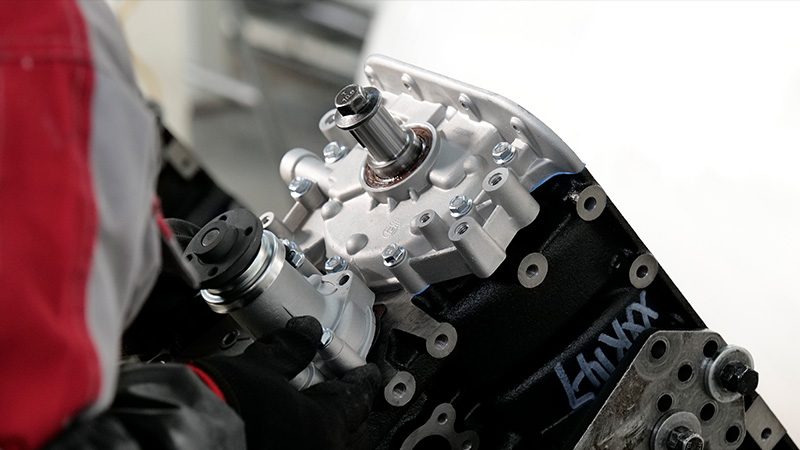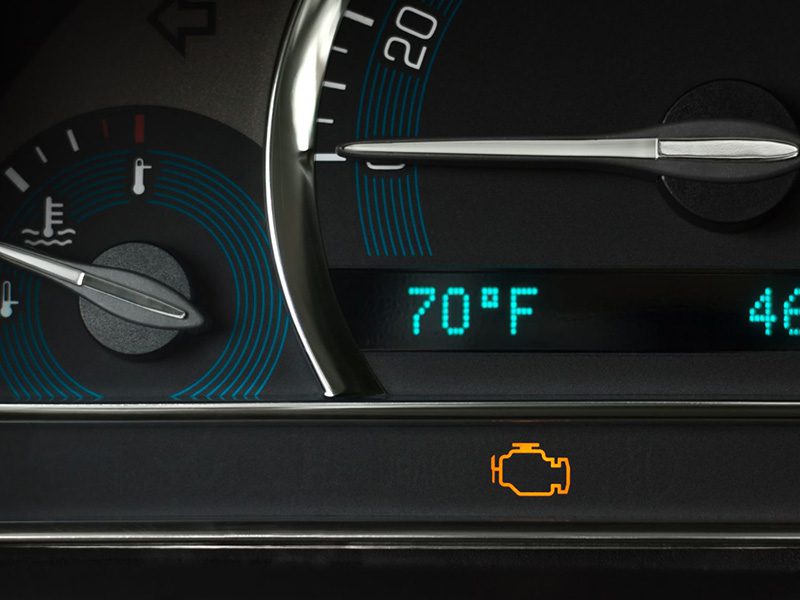You’re cruising down the road, and the dashboard lights are up like Christmas from nowhere. What immediately grabs attention is the Check Engine Light (CEL). Is the engine about to explode? Should you pull over immediately? Or is it just a sensor glitch?
The CEL has been one of the most misunderstood signals in a vehicle. It alerts you to potential issues in your engine or emissions system. However, not all alerts mean equal trouble. This guide breaks down the exact meaning of CEL alongside what to do.
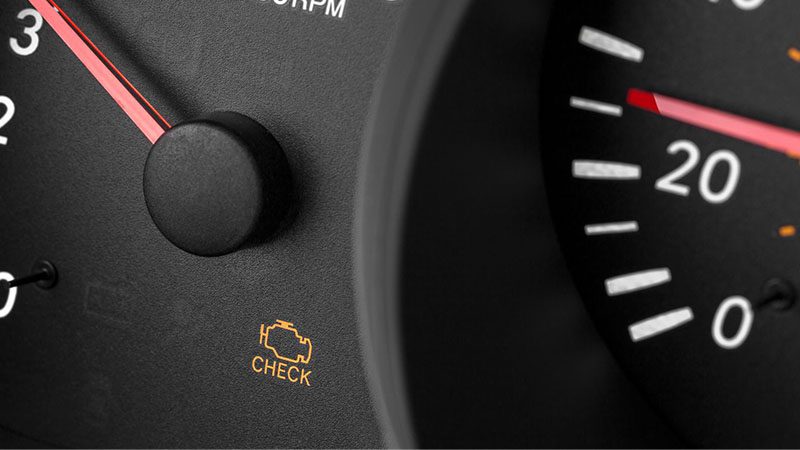
Understanding the Check Engine Light
Modern vehicles contain Onboard Diagnostics (OBD-II) systems to monitor engine performance, emissions, and other critical systems. The system may detect a fault – a misfire, sensor failure, or emissions issue.
It then triggers the CEL to alert the driver. The CEL helps ensure compliance with emissions standards and protects engine components from damage. CEL alerts are common due to aging components like catalytic converters.
Solid vs Flashing CEL: What’s the Difference?
Solid Check Engine Light
- Symptoms: Almost no noticeable change in driving performance.
- Causes: Loose gas cap, faulty oxygen sensor, minor emissions issues.
- Risks: Reduced fuel efficiency or emissions test failure if ignored.
- Action: Schedule a diagnostic check as soon as possible; not urgent.
Flashing CEL
- Symptoms: Engine misfires, rough idling, loss of power, and jerking while driving.
- Causes: Misfiring spark plugs, ignition coil failure, catalytic converter damage.
- Risks: Serious damage with catalytic converter failure (requiring expensive repairs).
- Action: Stop driving immediately and seek professional assistance or towing.
Many drivers willingly ignore a solid CEL as it’s somewhat harmless. However, a loose gas cap can initiate emissions faults that affect long-term performance.
Flashing Engine Light: Technical Explanation
Engine Control Module (ECM)
Modern vehicles use an ECM to monitor the engine through OBD-II. The system constantly checks sensors and actuators for faults. Detection of any serious issue forces the ECM to trigger a blinking CEL.
Diagnostic Trouble Codes (DTCs)
Solid CEL remains linked to non-urgent DTCs like P0442 (evaporative emission system leak). Whereas flashing CEL denotes critical DTCs such as P0300 (random/multiple cylinder misfire).
Real-Time Misfire Detection
The ECM uses data from crankshaft position sensors and knock sensors to detect misfires in real time. When misfires exceed a threshold, the CEL begins flashing to prevent further damage.
Why It Flashes Instead of Staying Solid?
1. Severity Indicator System: The flashing CEL can differentiate urgent threats from routine issues. It’s a visual cue that the exact problem is escalating.
2. Engine Protection Mechanism: Flashing alerts are part of a fail-safe strategy. They warn the driver before misfires cause –
- Overheating of the catalytic converter.
- Engine knock or pre-ignition.
- Permanent damage to pistons or valves.
3. Immediate vs Non-Immediate Threats: Misfires, fuel system failure, and ignition faults are immediate issues. You can put up with sensor errors and emissions leaks a bit longer.
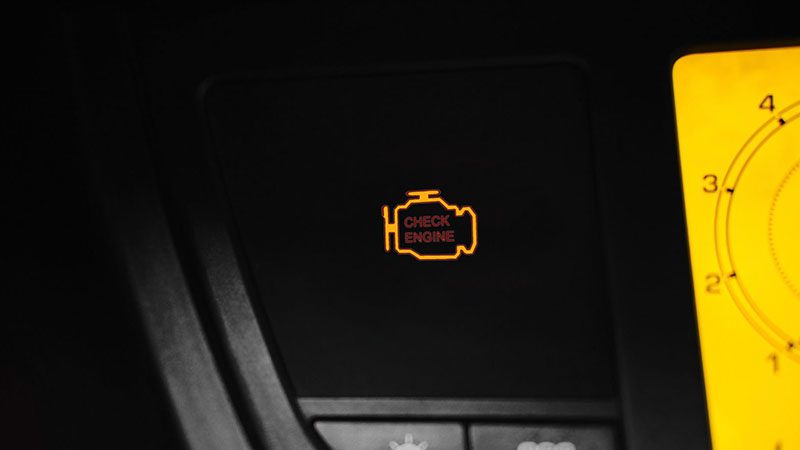
Primary Causes of a Flashing Light
1. Engine Misfires
It’s a condition where one or more cylinders fail to ignite the air-fuel mixture properly. Misfires can lead to severe damage to the catalytic converter and should never be ignored. The most common cause –
a. Ignition System Failures
- Faulty Spark Plugs: Worn or fouled plugs can’t produce a strong spark. Such misfires often occur under a stressful load or acceleration.
- Bad Ignition Coils: Coil-on-plug systems are especially prone to failure. You’ll have to deal with rough idle and poor fuel economy.
- Damaged Spark Plug Wires: Cracked or corroded wires disrupt spark delivery. It’s more common in older vehicles with distributor-based systems.
- Distributor Cap Issues (Older Vehicles): Moisture or wear inside the cap can cause misrouting of spark. It leads to random misfires towards irreversible damage.
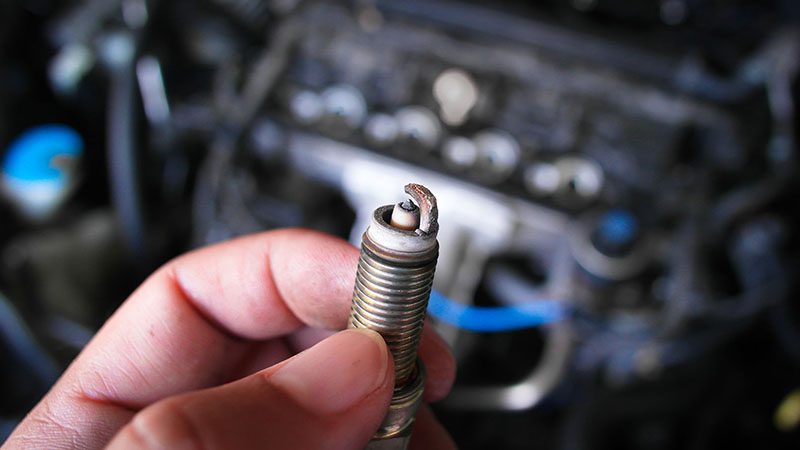
b. Fuel System Problems
- Clogged Fuel Injectors: Dirt or carbon buildup restricts fuel flow. Lean combustion and misfires initiate warning lights.
- Fuel Pump Pressure Issues: A weak pump or failing regulator causes low pressure. You’ll get to whining noise and poor acceleration.
- Contaminated Fuel: Water or debris in fuel disrupts combustion. It can cause intermittent misfires and stalling.
- Fuel Filter Blockage: A clogged filter starves the engine of fuel. The overlooked issue is quite critical for maintaining pressure.
c. Mechanical Engine Issues
- Low Cylinder Compression: Worn piston rings, valve leaks, or head gasket failure cause the problem. It weakens the combustion, resulting in power loss.
- Valve Timing Problems: It refers to incorrect timing due to a worn timing belt or chain. Disrupted intake or exhaust cycles prevail to cause misfires.
- Head Gasket Failure: Coolant or oil penetrates combustion chambers. The vehicle will produce white smoke, overheating, and misfires.
- Worn Piston Rings: It reduces the compression while increasing the oil consumption. The warning sign is rather common in high-mileage engines.
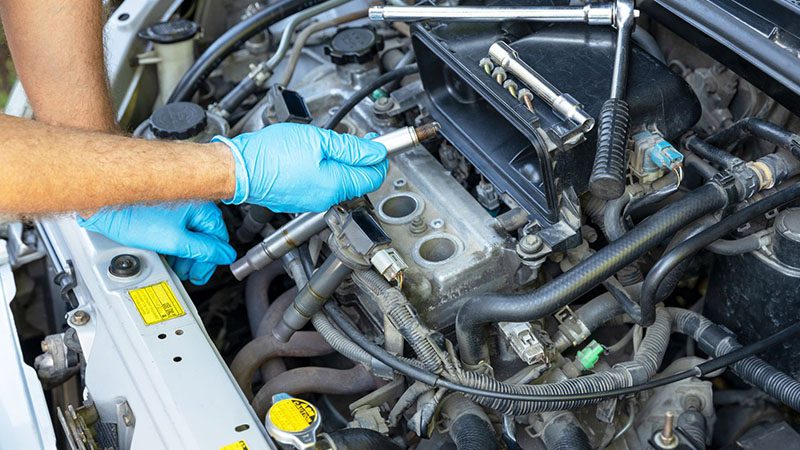
2. Emission (Catalytic Converter, MAF, or Oxygen Sensors) Malfunctions
a. Catalytic Converter Overheating
The catalytic converter (cat con) converts harmful gases like carbon monoxide and hydrocarbons into less toxic emissions. Primary causes –
- Engine misfires send raw fuel into the converter, igniting inside it.
- A clogged converter increases backpressure, raising engine and exhaust temperatures.
- Leaking fuel injectors or rich fuel mixtures turn into serious problems.
The substrate can melt inside the converter. Loss of engine power, poor acceleration, and red-hot exhaust components aren’t far behind. High repair costs make it one of the most expensive CEL fixes.
b. Oxygen Sensor Complete Failure
The oxygen (O₂) sensor monitors the oxygen content in exhaust gases. It helps the ECM adjust the air-fuel mixture. A complete failure disrupts the balance, initiating poor combustion. Symptoms include –
- Poor fuel economy due to rich or lean mixtures.
- Rough idle and stalling from incorrect combustion timing.
- Black smoke or a sulphur smell from the exhaust.
- Failed emissions tests and multiple DTCs (P0130 – P0141).
A bad O₂ sensor can cause the engine to run rich. Therefore, it sends excess fuel into the converter, accelerating overheating and failure.
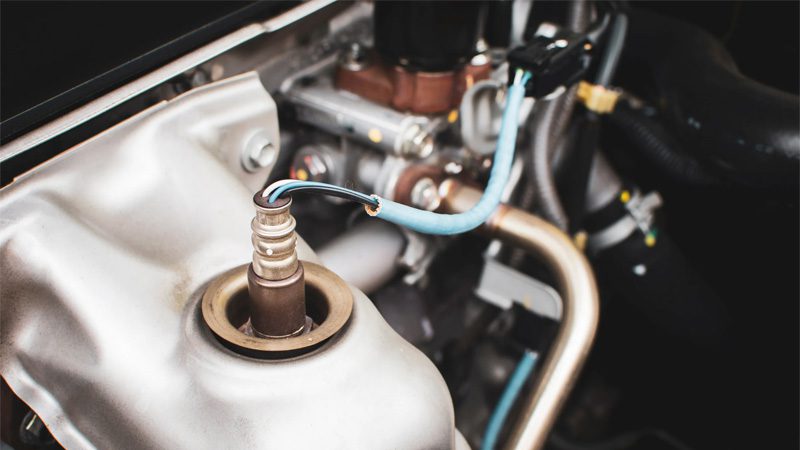
c. Mass Airflow Sensor (MAF) Critical Malfunction
The MAF sensor measures the volume of air entering the engine. It allows the ECM to calculate the correct fuel injection. A random malfunction can lead to severe air-fuel imbalance. Symptoms include –
- Check engine light with codes like P0100–P0104.
- Rough idling, hesitation, or jerking during acceleration.
- Black smoke and fuel smell from the exhaust due to rich mixtures.
- The engine misfires, especially under load or at startup.
The catalytic converter gets damaged by unburned fuel. It reduces fuel efficiency with more emissions. Hard starting and stalling become common in severe cases.

3. Timing Chain/Belt Issues
a. Jumped Timing
A jumped timing chain or belt occurs when the chain or belt slips a tooth or more on the sprockets. It throws off the engine’s timing. Symptoms include –
- Rattling or ticking noises from the engine, especially at idle or acceleration.
- Engine misfires, rough idle, and poor acceleration.
- Check Engine Light activation, often with misfire-related DTCs like P0300.
- In severe cases, the engine may fail to start entirely.
Worn tensioners or guides take place. Excessive slack occurs due to age or poor maintenance. Sudden engine load or RPM spikes aren’t far behind.
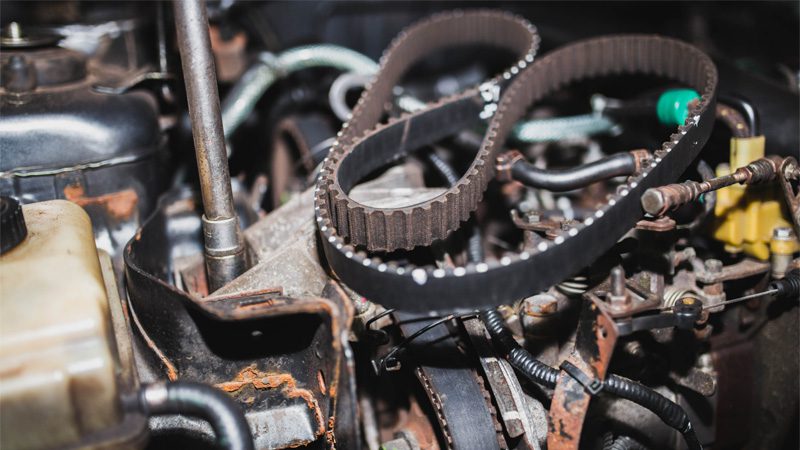
b. Stretched Timing Components
Over time, timing chains can stretch, and belts can wear, especially in high-mileage engines. This leads to delayed valve timing and poor combustion synchronization. Symptoms include –
- Poor fuel economy due to inefficient combustion.
- Loss of power, sluggish acceleration.
- CEL flashing intermittently, especially under load.
Natural wear occurs over 100,000+ miles. Lack of oil changes (for chains, which rely on lubrication) also worsens the condition. Use of low-quality replacement parts is partially responsible.
c. Complete Timing Failure
This is the most severe scenario. As the timing belt snaps or the chain breaks, total synchronization loss occurs. Immediate effects –
- The engine stalls suddenly or fails to start.
- Bent valves, cracked pistons, damaged cylinder head.
- Flashing CEL accompanied by loud mechanical noises or total silence.
What Happens When You’re Driving with a Flashing Check Engine Light?
1. Immediate Risks (Within Minutes to Hours)
- Catalytic Converter Meltdown: Unburned fuel from misfires enters the exhaust system. It overheats and melts the ceramic core of the catalytic converter.
- Engine Overheating: Misfires and poor combustion increase engine load and heat. The coolant system may fail to keep up, risking head gasket failure. The temperature gauge spikes with steam seen from the hood.
- Complete Engine Seizure: Prolonged misfires and overheating lead to oil breakdown and metal-on-metal contact. Pistons seize and crankshaft locking turns the engine inoperable.
- Roadside Breakdown: Engine enters “limp mode” or stalls completely. The vehicle becomes stranded, calling for towing.
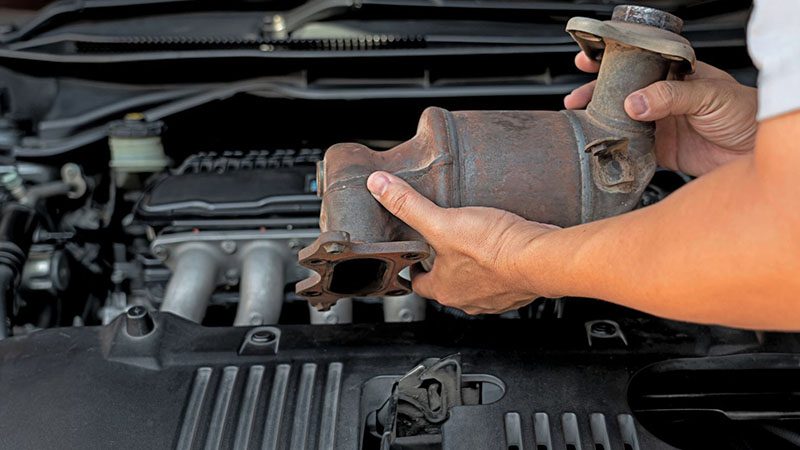
2. Progressive Damage (Within Days)
- Cylinder Wall Scoring: Poor combustion and oil contamination initiate this. Deep grooves in cylinder walls reduce compression. It requires engine teardown and re-machining.
- Valve Damage: It comes from incorrect timing or a misfire shock. Bent or burnt valves reduce airflow and power.
- Piston Damage: Detonation or pre-ignition from misfires triggers this. Cracked or melted pistons worsen. Complete rebuild or even engine replacement may seem necessary.
- Transmission Stress (Automatic Vehicles): Engine misfires cause erratic RPMs and torque delivery. The transmission shifts harshly or prematurely.
Immediate Response: What to Do Right Away with Flashing CEL
First 30 Seconds
- Reduce Speed Immediately: Misfires at high RPMs increase heat and stress on the engine. Ease off the accelerator and avoid sudden throttle inputs.
- Turn Off Air Conditioning/Heating: It reduces engine load and prevents overheating. Shut down climate control systems to conserve engine power.
- Find a Safe Place to Pull Over: Continued driving risks engine or catalytic converter damage. Use mirrors and signals to exit traffic and stop safely.
- Turn on Hazard Lights: Alerts other drivers that your vehicle may be disabled or slowing unexpectedly. Activate hazards immediately after pulling over.

Assessment Checklist
- Unusual Sounds: Listen for knocking, rattling, or backfiring.
- Strange Smells: Indication of leaks or overheating from burnt oil or coolant odors.
- Performance Changes: Hesitation, surging, or rough idling are signs of misfire severity.
- Engine Temperature Gauge: If it’s rising rapidly, shut off the engine immediately.
- Document the Moment: Note when the CEL started flashing and under what condition.
Decision Making
It’s still possible to drive safely in rare cases when –
- No loud noises or overheating.
- CEL flashes only briefly and stops.
- Close to a trusted service center.
Call roadside assistance immediately when –
- CEL continues flashing persistently.
- The engine feels rough, stalls, or emits smoke.
- The temperature gauge spikes or the dashboard shows overheating.
Emergency Troubleshooting: Quick Checks
Safe Visual Inspections
- Loose Gas Cap: Ensure the cap is tight and clicks into place.
- Obvious Fluid Leaks: Look for oil puddles (dark brown/black), coolant leaks (green, orange, or pink), and transmission fluid (red).
- Unusual Exhaust Smoke Colors: Blue smoke from burning oil means possible piston ring or valve seal failure. White Smoke from coolant in the combustion chamber indicates a head gasket issue. Black Smoke from a rich fuel mixture denotes a misfire or injector problem.
- Battery Connections: Ensure terminals are clean and tight.
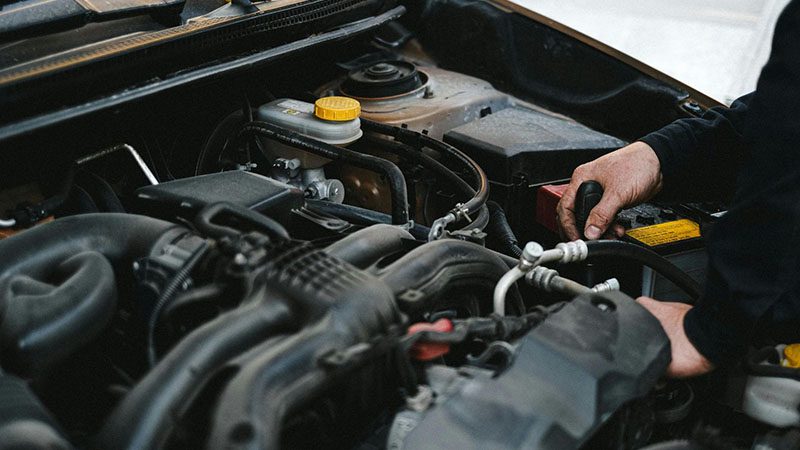
What NOT to Do
Don’t Ignore “Just This Once”: A flashing CEL can destroy your catalytic converter in under 30 minutes of driving.
Don’t “Reset” the Light: Clearing codes without fixing the root cause hides the problem and delays necessary repairs.
Don’t Attempt DIY While Running: Moving parts, hot surfaces, and electrical systems pose serious injury risks.
Don’t “Let’s See If It Gets Worse”: Misfires worsen with heat and load, increasing the potential damage to the engine or exhaust.
Understanding the Diagnostic Process
OBD-II Scanner Limitations with Active Misfires
Basic OBD-II scanners can retrieve Diagnostic Trouble Codes (DTCs), but they often lack the depth needed for active misfire analysis. But it features limitations like –
- Inability to detect intermittent faults.
- Inability to pinpoint root causes.
- Lacks real-time waveform analysis or bi-directional control.
- Advanced Diagnostic Equipment Needed
Oscilloscopes analyzes ignition waveforms and injector pulses. Smoke machines detect vacuum leaks contributing to lean conditions.
Compression testers identify mechanical faults like valve or piston damage. Scan tools with live data monitor fuel trims, misfire counters, and sensor voltages.
Standard Diagnostic Trouble Codes for Flashing CEL
- P0300: Random/multiple cylinder misfire from ignition coil, fuel injector, or vacuum leak.
- P0301 – P0308: Specific cylinder misfire from spark plug, coil, injector, or compression.
- P0420/P0430: Catalyst efficiency below threshold from catalytic converter damage, misfire.
- P0171/P0174: System Too Lean (Bank 1/2) from vacuum leak, MAF sensor, fuel delivery.
Why Professional Diagnosis Is Critical?
Professional techs use a process of elimination, guided by DTCs and real-time data. Shops use dealer-level tools and manufacturer-specific software for precision.
Live misfires can cause engine overheating or fire risk. High-voltage ignition systems pose shock hazards. Fuel leaks or vapor buildup can be explosive.
Diagnosis is a complex and collaborative process that is difficult to maintain with DIY acts. It requires clinical reasoning, technical tools, and safety protocols.
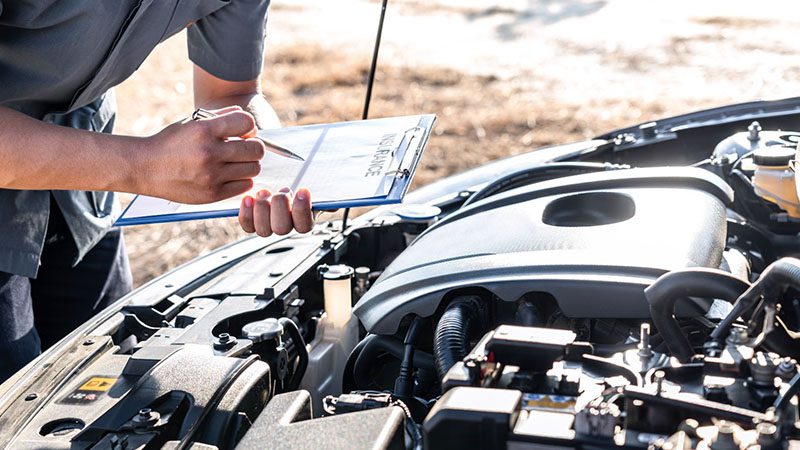
Frequently Asked Questions (FAQs)
Q1: Can a Flashing Check Engine Light Be Ignored?
No. Ignoring a flashing CEL can lead to catastrophic engine damage. It’s a warning that the engine is misfiring or experiencing a critical fault.
Q2: What Should I Do If My Check Engine Light Flashes While Driving?
Pull over safely as soon as possible. Turn off the engine to prevent overheating or further misfiring. Avoid restarting the engine repeatedly.
Q3: Why Is My Check Engine Light Flashing After Restarting the Car?
If the CEL flashes after restarting, it likely means the underlying issue hasn’t been resolved. This can result from persistent misfire, fuel system imbalance, and sensor malfunction.
Q4: Can Low Fuel Pressure Cause a Flashing Check Engine Light?
Yes. Low fuel pressure disrupts the air-fuel mixture, leading to lean conditions and engine misfires. This can trigger a flashing CEL, especially under load or acceleration.
Q5: Is It Safe to Drive Short Distances with a Flashing CEL?
No. Even short trips can cause thermal damage to the catalytic converter due to unburned fuel. The risk of engine failure or emissions system damage increases with every mile.
Q6: Will Disconnecting the Battery Reset a Flashing Check Engine Light?
Disconnecting the battery may temporarily clear the CEL, but it won’t fix the underlying issue. If the problem persists, the light will return once the ECU re-detects the fault.
Conclusion
A flashing CEL feels like a dreadful moment as a car owner. But it doesn’t have to be any more complex than necessary. Proceed with the assessment and stick to maintenance – that’s all you need whenever the Check Engine Light pops up. Leave the servicing to professionals for precise fixation.
Grow Your Auto Parts Business with Woda Auto
Woda Auto has excelled in the automotive industry for 25 years. From engine and ignition to electrical and exhaust components, we provide the expertise and quality parts to help your business succeed. Contact us to know how our assistance can make all the difference for your professional initiative.
